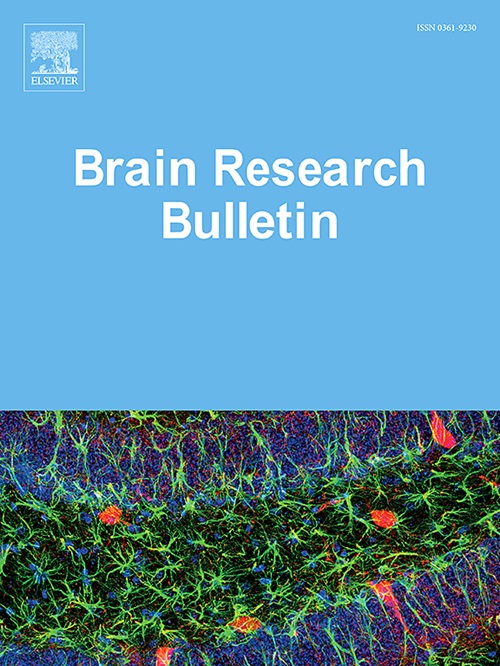金属与儿茶酚胺之间的相互作用:氧化应激、DNA损伤及其对人体健康的影响
IF 3.5
3区 医学
Q2 NEUROSCIENCES
引用次数: 0
摘要
金属和儿茶酚胺之间的相互作用在活性氧(ROS)的产生中起着关键作用,导致氧化应激和DNA损伤。活性氧与多种疾病有关,包括帕金森氏症和阿尔茨海默氏症等神经退行性疾病。这篇综述探讨了必需金属(铁、铜、锌、锰)和一些非必需金属(类金属)(汞、铬、砷、铝、镉和镍)在儿茶酚胺存在下是如何促进氧化应激的。在金属存在的情况下,儿茶酚胺参与氧化还原反应,氧化生成相应的氨基色素,同时产生ROS,从而引起DNA氧化修饰,可能导致细胞凋亡。必需金属对生理功能至关重要,但体内平衡失衡可能是有害的。此外,非必需金属,通常通过环境或职业接触接触,可以表现出显著的毒性。先前关于儿茶酚胺诱导氧化应激的研究主要集中在铜和铁上,但本文强调需要研究其他神经毒性金属,并扩大现有的金属、儿茶酚胺和DNA损伤之间相互作用的知识。这类研究的结果有助于优先发展与不良后果途径相关的新评估方法,以可靠地预测对人类健康的有害影响,协助制定治疗战略。目前的工作将有助于阐明金属、儿茶酚胺和DNA损伤在不同疾病中的相互作用,希望在这一尚未得到充分研究的课题上促进新的研究。未来的研究应探讨这些金属影响神经元健康和促进疾病发病的分子机制。本文章由计算机程序翻译,如有差异,请以英文原文为准。
The interaction between metals and catecholamines: oxidative stress, DNA damage, and implications for human health
The interaction between metals and catecholamines plays a pivotal role in the generation of reactive oxygen species (ROS), leading to oxidative stress and DNA damage. ROS are linked to several diseases, including neurodegenerative disorders such as Parkinson’s and Alzheimer’s diseases. This review examines how essential metals (iron, copper, zinc, manganese) and a few non-essential metal(loid)s (mercury, chromium, arsenic, aluminum, cadmium, and nickel) contribute to oxidative stress in the presence of catecholamines. In the presence of metals, catecholamines can cause oxidative DNA modification, possibly resulting in cell apoptosis, by taking part in redox reactions and oxidizing to the corresponding aminochrome with simultaneous ROS production. Essential metals are vital for physiological functions, but imbalances in their homeostasis can be harmful. Furthermore, non-essential metals, commonly encountered through environmental or occupational exposure, can exhibit significant toxicity. Previous studies on catecholamine-induced oxidative stress focused on copper and iron, but this review emphasizes the need to investigate other neurotoxic metals and expand existing knowledge on the interactions between metals, catecholamines, and DNA damage. Results from such research could help prioritizing the development of new assessment methods associated with adverse outcome pathways, to reliably predict harmful effects on human health, aiding in the development of therapeutical strategies. The present work will help to shed light on the interplay of metals, catecholamines, and DNA damage in different diseases hopefully fostering new research in this still understudied topic. Future research should investigate the molecular mechanisms through which these metals affect neuronal health and contribute to disease pathogenesis.
求助全文
通过发布文献求助,成功后即可免费获取论文全文。
去求助
来源期刊

Brain Research Bulletin
医学-神经科学
CiteScore
6.90
自引率
2.60%
发文量
253
审稿时长
67 days
期刊介绍:
The Brain Research Bulletin (BRB) aims to publish novel work that advances our knowledge of molecular and cellular mechanisms that underlie neural network properties associated with behavior, cognition and other brain functions during neurodevelopment and in the adult. Although clinical research is out of the Journal''s scope, the BRB also aims to publish translation research that provides insight into biological mechanisms and processes associated with neurodegeneration mechanisms, neurological diseases and neuropsychiatric disorders. The Journal is especially interested in research using novel methodologies, such as optogenetics, multielectrode array recordings and life imaging in wild-type and genetically-modified animal models, with the goal to advance our understanding of how neurons, glia and networks function in vivo.
 求助内容:
求助内容: 应助结果提醒方式:
应助结果提醒方式:


